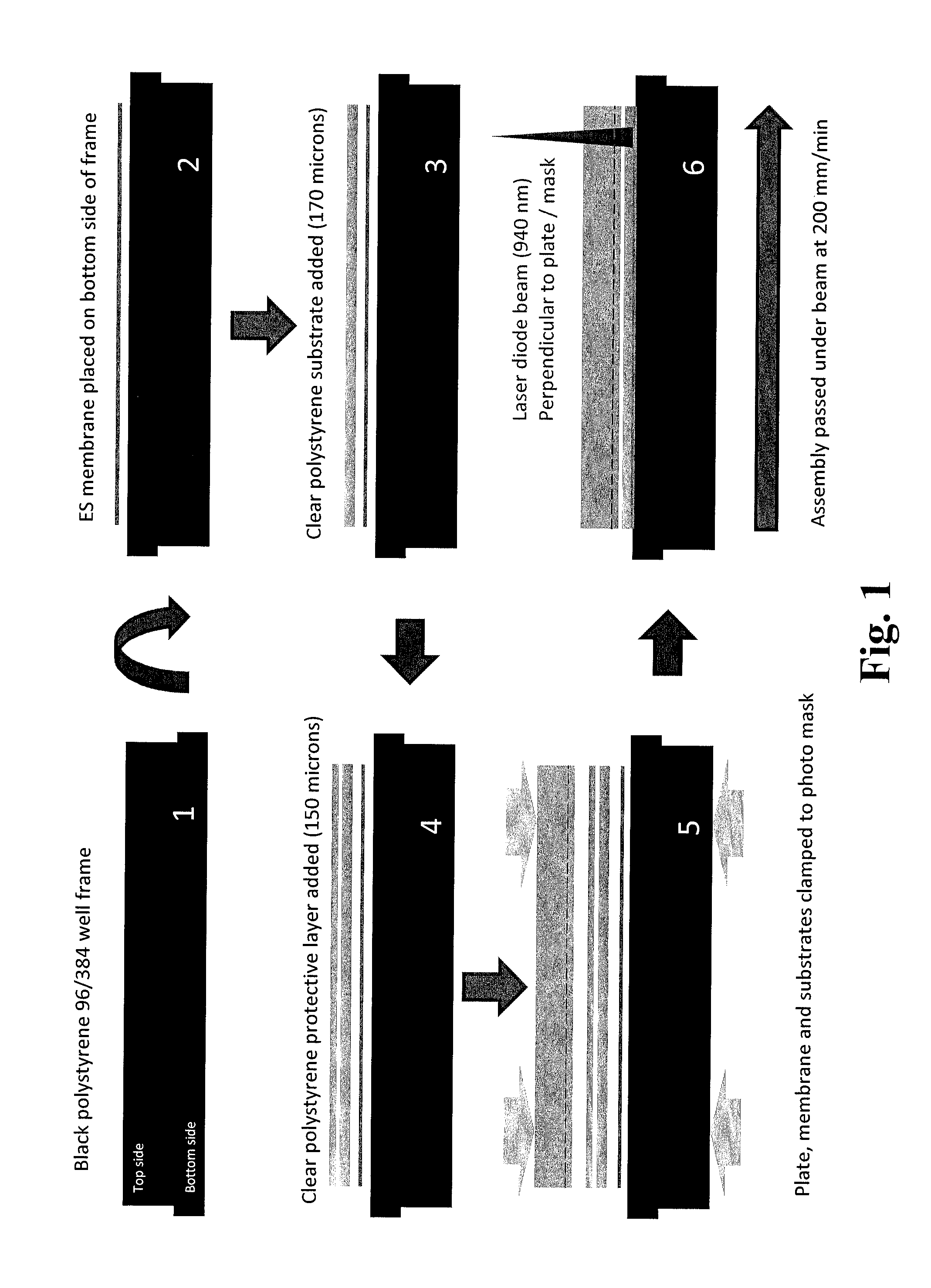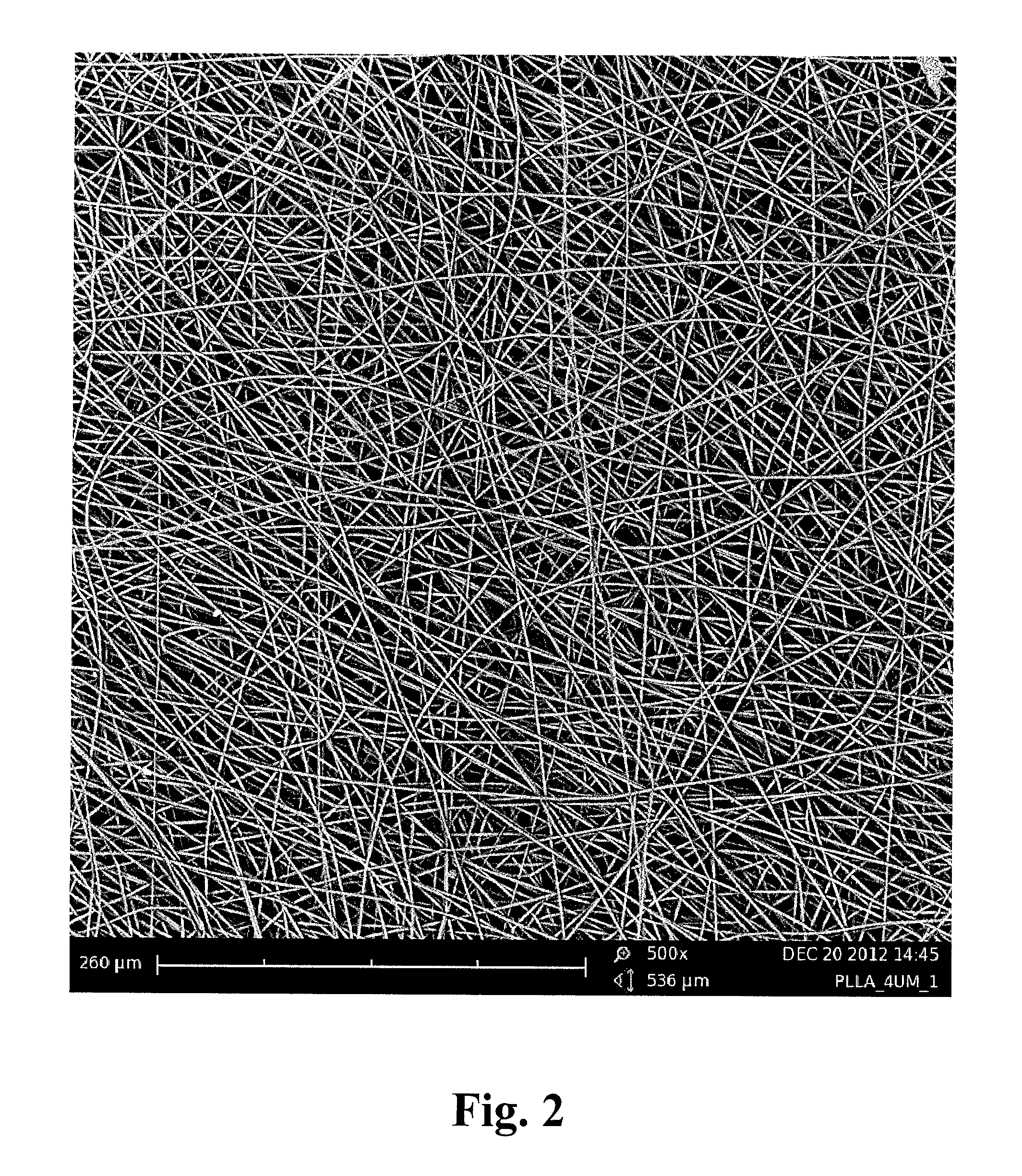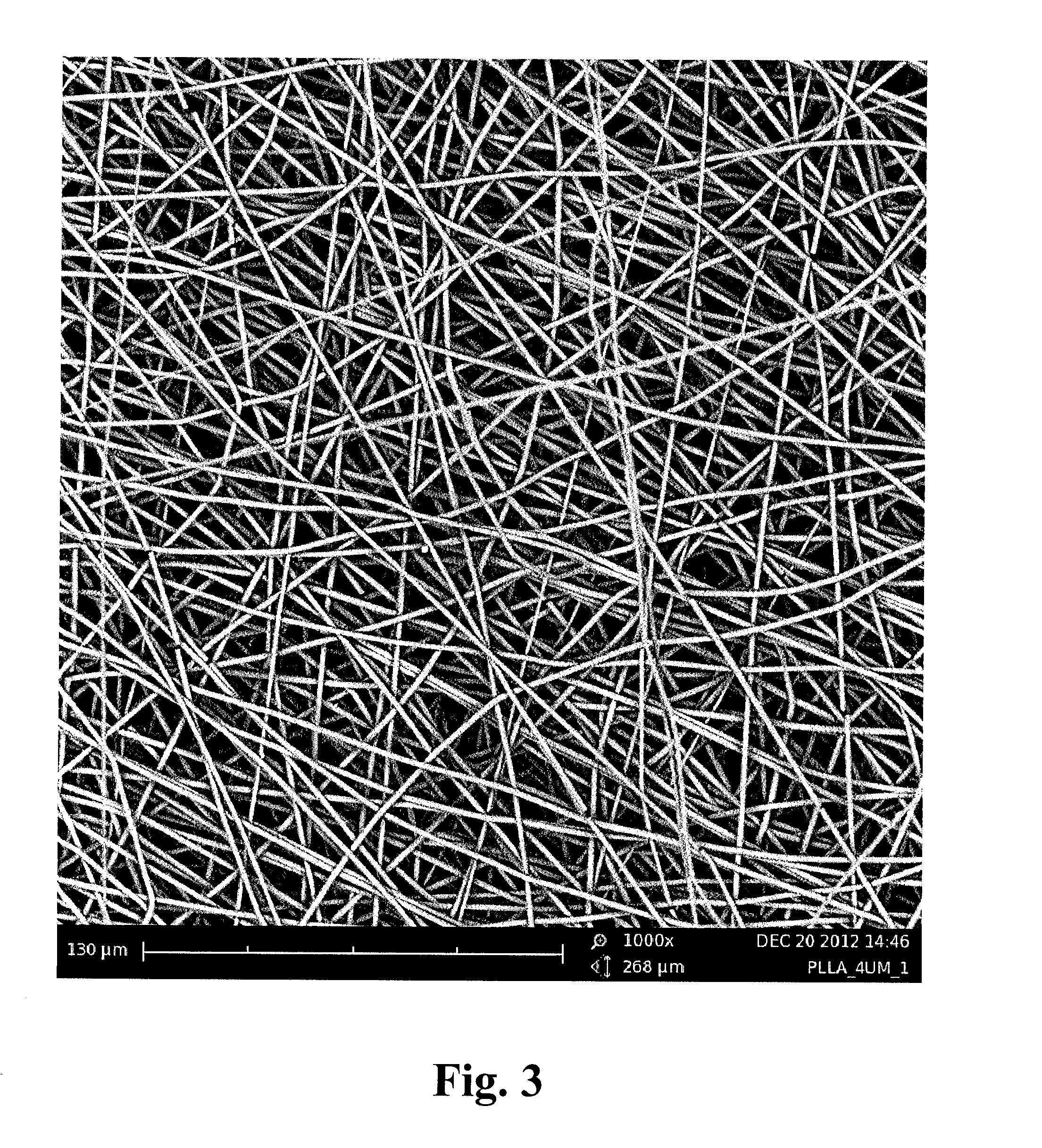Multi-well plate
a multi-well plate and plate body technology, applied in the field of multi-well plate, can solve the problems that the animal studies of model systems such as mice and rats do not accurately represent the more complex human physiological environment, and achieve the effects of stimulating the production of extracellular matrix (ecm), high consistency and reproducibility, and facilitating the growth of three-dimensional (3d) cell cultures
- Summary
- Abstract
- Description
- Claims
- Application Information
AI Technical Summary
Benefits of technology
Problems solved by technology
Method used
Image
Examples
example 1
Scaffold Fabrication and Preparation of Multi-Well Plate
1. Scaffold Fabrication by Electrospinning
[0289]A solution was prepared by dissolving 3.0 grams of polymer, poly(L-lactide), (poly[(3S-cis)-3,6-dimethyl-1,4-dioxane-2,5-dione]), having an Inherent Viscosity Midpoint of 1.8 dl / g, in 27.0 grams of the solvent, 1,1,1,3,3,3-Hexafluoroisopropanol (HFIP), with continuous stirring at room temperature until a homogeneous solution of the required concentration, 10 wt %, was obtained. The polymer solution was loaded into a plastic syringe connected to a metal capillary (21 gauge) via PTFE tubing. The metal capillary was connected to the positive terminal of a high voltage, DC power supply, at a fixed distance of 300 mm from an earthed metallic collection device (covered in an Aluminium foil / silicone coated release paper substrate) onto which the fibres were deposited. The collection device was a rotating drum to ensure uniform deposition of the material. Fibres were produced by passing t...
example 2
Measurement of Fibre Diameter and Diameter Distribution
[0300]Scaffolds were fabricated by electrospinning using the method described in Example 1. The electrospun samples were imaged using a Phenom G2 pro scanning electron microscope, which allows for automatic fibre diameter measurements by the Fibremetric Software Application from PhenomWorld. Fibre samples were mounted onto conductive adhesive tabs and loaded into a charge reduction sample holder, which was subsequently inserted into the scanning electron microscope (SEM). SEM images of the fibres were obtained, examples of which are shown in FIG. 2 (500× magnification image), FIG. 3 (1000× magnification image) and FIG. 4 (2000× magnification image). To obtain a statistically sound measurement of the fibre diameter distribution, the diameters of 100 fibres were measured using an image at 1000-2000× magnification. In some instances, the software recognises two fibres which cross or stick together as one; these data points were del...
example 3
Comparative Testing of Scaffolds of 2 μm Fibre Diameter and 4 μm Fibre Diameter, Each in Two (2) Scaffold Thicknesses
[0317]Production of Scaffolds with 2 μm Fibre Diameter
[0318]Scaffold membranes having thicknesses of 50 μm and 100 μm, and containing poly(L-lactide) fibres with a mean diameter of 2 μm, were produced by the electro spinning method described in Example 1 above.
Production of Scaffolds with 4 μm Fibre Diameter
[0319]Scaffold membranes having thicknesses of 50 μm and 100 and containing poly(L-lactide) fibres with a mean diameter of 4 μm, were produced by the following method:
[0320]A solution was prepared by dissolving 4.5 grams of polymer, poly(L-lactide), (poly[(3S-cis)-3,6-dimethyl-1,4-dioxane-2,5-dione]), having an Inherent Viscosity Midpoint of 1.8 dl / g, in 25.5 grams of the solvent, 1,1,1,3,3,3-Hexafluoroisopropanol (HFIP), with continuous stirring at room temperature until a homogeneous solution of the required concentration, 15 wt %, was obtained. The polymer solut...
PUM
| Property | Measurement | Unit |
|---|---|---|
| diameter | aaaaa | aaaaa |
| diameter | aaaaa | aaaaa |
| width | aaaaa | aaaaa |
Abstract
Description
Claims
Application Information
 Login to View More
Login to View More - R&D
- Intellectual Property
- Life Sciences
- Materials
- Tech Scout
- Unparalleled Data Quality
- Higher Quality Content
- 60% Fewer Hallucinations
Browse by: Latest US Patents, China's latest patents, Technical Efficacy Thesaurus, Application Domain, Technology Topic, Popular Technical Reports.
© 2025 PatSnap. All rights reserved.Legal|Privacy policy|Modern Slavery Act Transparency Statement|Sitemap|About US| Contact US: help@patsnap.com



